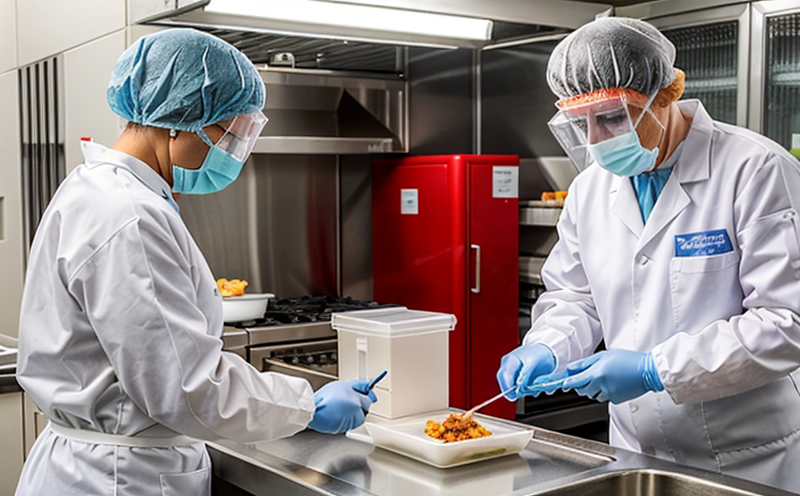FDA BAM Chapter 32 Detection of Hepatitis E Virus in Pork Liver
The FDA Bacteriological Analytical Manual (BAM) Chapter 32 provides a standardized method for detecting the presence of hepatitis E virus (HEV) in pork liver. This procedure is crucial given the increasing concern about foodborne viruses and their impact on public health.
HEV, a member of the family *Apomavirus*, is one of several viruses that can cause acute gastroenteritis and hepatocellular damage. The virus primarily affects pigs but can also infect humans, leading to significant health risks if not properly controlled during food production. Ensuring the safety of pork liver products is essential for maintaining public health standards.
Chapter 32 outlines a rigorous protocol designed to minimize false positives and negatives through multiple stages of testing. The process begins with proper sampling of raw pork liver followed by extraction, concentration, and amplification steps. Advanced molecular techniques such as real-time reverse transcription polymerase chain reaction (RT-qPCR) are employed for accurate detection.
Compliance with FDA BAM Chapter 32 ensures that food products meet stringent regulatory requirements set forth to protect consumers from potential health hazards associated with HEV contamination. This method is particularly important in countries where pork consumption is high and there have been reported outbreaks linked to this pathogen.
The procedure involves several key steps:
- Sampling: Collection of representative samples from various parts of the liver ensuring adequate representation across different batches.
- Preliminary Processing: Removal of visible contaminants and debris before further processing.
- Extraction & Concentration: Utilization of appropriate buffers and centrifugation techniques to isolate viral particles effectively.
- Detection via RT-qPCR: Amplification and quantification of the target RNA sequence using specific primers targeting regions unique to HEV.
Following detection, results must be interpreted carefully considering both positive and negative controls used throughout the procedure. Any discrepancy between expected outcomes and actual findings should prompt retesting or additional investigation into possible sources of contamination within the supply chain.
Scope and Methodology
The scope of FDA BAM Chapter 32 focuses specifically on detecting hepatitis E virus in pork liver samples. This includes defining parameters such as acceptable levels of detection sensitivity and specificity, acceptable ranges for sample preparation timeframes, and criteria for interpreting test results.
Methodologically, the procedure relies heavily upon molecular biology techniques including extraction, amplification, and quantification processes conducted under controlled laboratory conditions. These methods ensure consistent reproducibility across multiple testing facilities while maintaining high levels of accuracy.
A critical aspect of this methodology involves ensuring that all materials used comply with internationally recognized standards like ISO 15189:2017 which sets forth requirements for quality management systems in clinical laboratories. Additionally, adherence to FDA guidelines ensures proper handling and storage procedures are followed throughout the entire testing cycle.
By following these strict protocols, laboratories can provide reliable results that contribute significantly towards maintaining safe food practices compliant with relevant regulations globally.
Eurolab Advantages
At Eurolab, we offer unparalleled expertise in conducting FDA BAM Chapter 32 tests for detecting hepatitis E virus in pork liver. Our team of highly skilled professionals ensures accurate and reliable results every time.
- Comprehensive Knowledge Base: We have extensive experience working with various types of viral contaminants, allowing us to offer precise diagnostics tailored specifically to your needs.
- State-of-the-Art Equipment: Utilizing advanced instrumentation and software solutions helps ensure consistent quality outputs across all tests performed.
- Experienced Technicians: Our staff members are trained extensively in current best practices related to food safety testing, ensuring each sample receives thorough analysis.
- Predictable Turnaround Times: By streamlining our operational processes, we can provide quick turnaround times without compromising on accuracy or precision.





